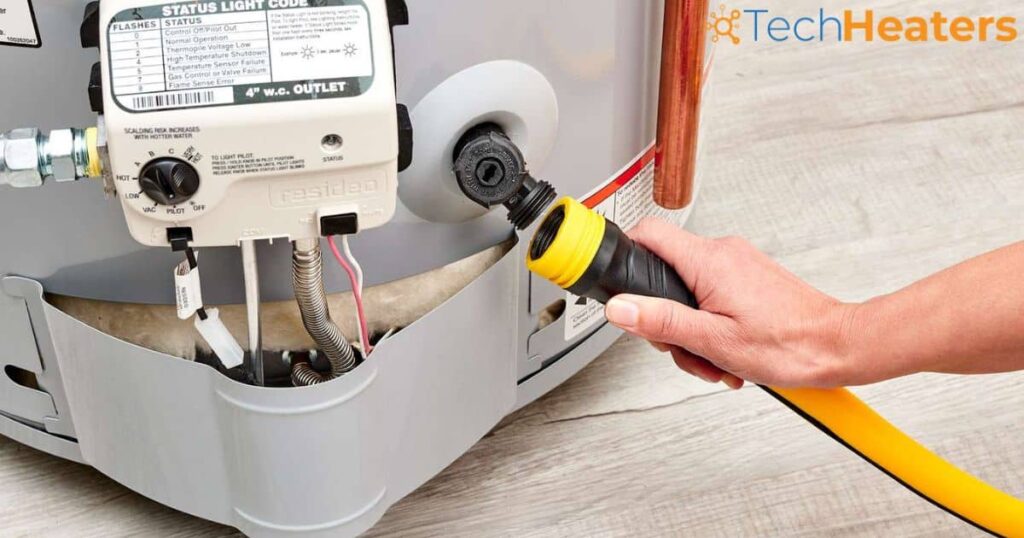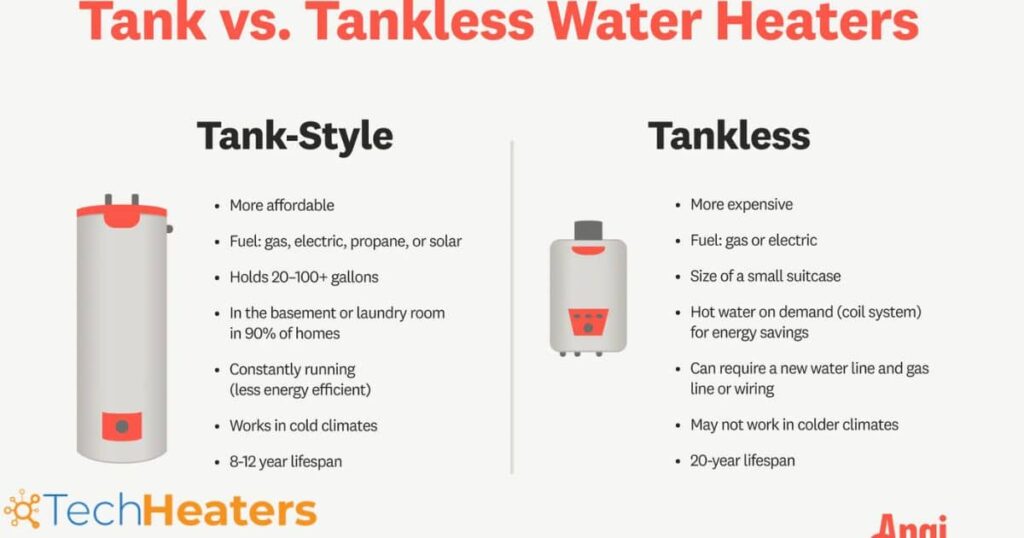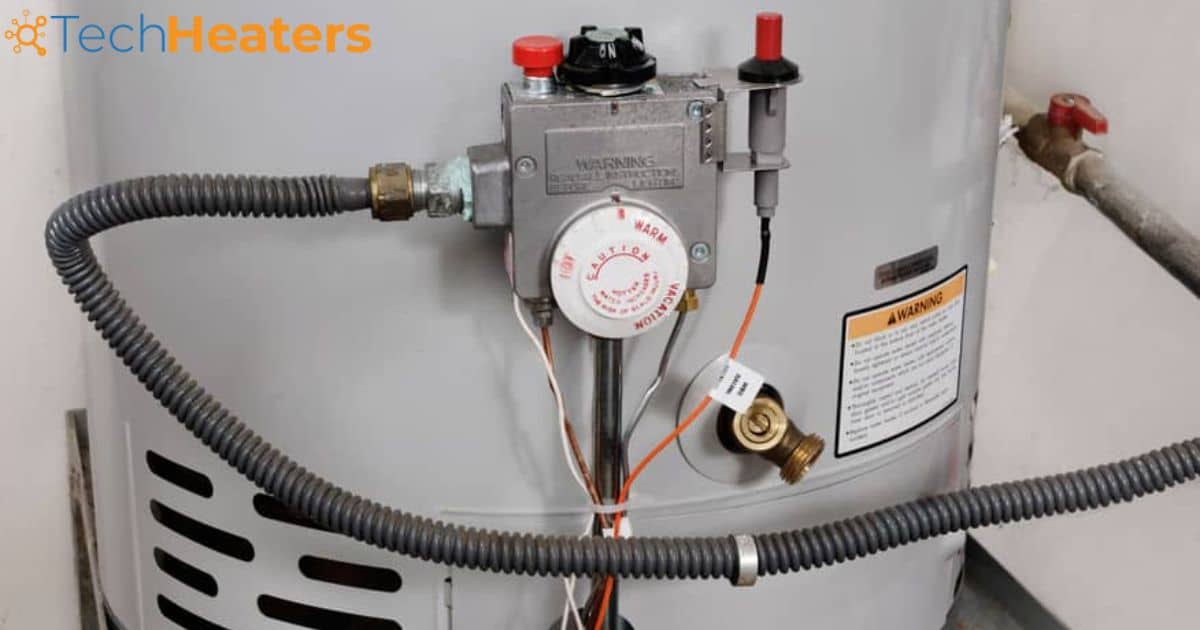Welcome to our comprehensive guide on how long it takes to drain a 50-gallon water heater. As homeowners, we understand the importance of maintaining our appliances to ensure their optimal performance and longevity.
In this article, we will explore the factors that affect drain time, the step-by-step process of draining a water heater, and why regular maintenance is crucial. We will also provide tips to expedite the draining process and discuss the average time it takes to drain a 50-gallon water heater.
By following these guidelines, you can effectively maintain your water heater and make informed decisions about its upkeep. So, let’s dive in and discover the key insights to keep your water heater functioning at its best.
Key Takeaways
- The factors affecting drain time for a water heater include the size and design of the drain valve, water pressure in the system, location of the water heater in relation to the drain point, temperature of the water, sediment buildup, and efficiency of the heating element.
- The steps to drain a water heater include turning off the power supply or gas valve, attaching a hose to the drain valve, placing the other end of the hose in a suitable drainage area, opening the drain valve to allow water to flow out, and closing the drain valve once the water has fully drained.
- Regular drainage of the water heater is important as it extends the lifespan of the water heater, reduces the risk of sediment buildup, improves energy efficiency, helps maintain water quality, and prevents potential leaks and water damage.
- Additional considerations include consulting the manufacturer’s instructions for specific drain time recommendations, considering hiring a professional plumber for efficient and proper drainage, regular maintenance to prevent issues and prolong the water heater’s lifespan, draining the water heater at least once a year, and flushing the tank before refilling it.
Factors Affecting Drain Time
Several factors can influence the drain time of a 50-gallon water heater. The first factor to consider is the size and design of the drain valve. A larger valve with a wider opening will allow for faster drainage compared to a smaller valve.
The second factor is the water pressure in the system. Higher water pressure will result in faster drainage, while lower pressure may slow down the process. The location of the water heater in relation to the drain point can affect drain time.
If the distance between the two is considerable, it may take longer for the water to flow out. Finally, the temperature of the water can also impact drain time. Hot water will flow more quickly than cold water. Considering these factors will help determine the approximate drain time for a 50-gallon water heater.
Draining Process and Steps

To begin the discussion on the draining process and steps of a 50-gallon water heater, it is important to understand the necessary procedures involved.
Draining a 50-gallon water heater requires careful attention to detail and adherence to specific steps. Here is a breakdown of the draining process:
- Turn off the power supply: Before starting, it is crucial to turn off the power supply to the water heater, either by flipping the breaker or shutting off the gas valve.
- Attach a hose: Connect a garden hose to the drain valve located at the bottom of the water heater.
- Open the drain valve: Open the drain valve and allow the water to flow into a suitable drainage area.
- Flush the tank: To remove sediment and debris, open the cold-water supply valve for a few minutes while the drain valve is still open.
Importance of Draining Your Water Heater
Regular maintenance and draining of your water heater is essential for optimal performance, including adjusting the hot water heater temperature. Draining your water heater helps to remove sediment buildup, improve energy efficiency, and extend the lifespan of your appliance.
Over time, minerals and sediment can accumulate at the bottom of the tank, causing corrosion and reducing heating efficiency. By regularly draining your water heater, you can prevent these issues and ensure that your appliance functions at its best.
Draining your water heater can also improve water quality by removing any bacteria or contaminants that may have settled in the tank. It is recommended to drain your water heater at least once a year to maintain its performance and prolong its lifespan.
Frequency of Draining and Flushing
Draining and flushing should be performed on a regular basis to ensure optimal performance of your water heater. Neglecting this maintenance task can lead to sediment buildup, reduced efficiency, and even premature failure of the unit.
To keep your water heater in top condition, consider the following frequency recommendations:
- At least once a year: This is the minimum recommended frequency for draining and flushing your water heater.
- High sediment areas: If you live in an area with high mineral content in the water supply, more frequent draining and flushing may be necessary.
- Older units: Older water heaters may require more frequent maintenance to prevent sediment accumulation.
- Manufacturer’s instructions: Always consult the manufacturer’s guidelines for specific recommendations based on your water heater model.
Tips for Faster Draining
Efficiency can be enhanced through the implementation of strategies to expedite the draining process of a 50-gallon water heater. Here are some tips to help you drain your water heater more quickly. Firstly, turn off the power supply to the water heater to prevent any accidents.
Next, locate the drain valve on the heater, usually located near the bottom. Attach a garden hose to the valve and place the other end in a suitable drainage area, such as a floor drain or outside. Open the valve by turning it counterclockwise.
This will allow the water to flow out of the tank. To speed up the process, open a hot water tap in your house to create a vent and allow air to enter the tank. Finally, once the tank is fully drained, close the drain valve and remove the hose. Following these tips will help you expedite the draining process of your 50-gallon water heater.
Average Time to Drain a 50-Gallon Water Heater
To accurately determine the duration needed to drain a 50-gallon water heater, it is essential to consider various factors that can affect the process. These factors include the condition of the water heater, the efficiency of the draining equipment, the water pressure, and the expertise of the person performing the task.
On average, it takes approximately 30 to 45 minutes to drain a 50-gallon water heater. However, this time can vary depending on the aforementioned factors. It is important to note that draining a water heater requires caution and adherence to safety guidelines.
It is recommended to consult the manufacturer’s instructions or seek professional assistance to ensure a proper and efficient draining process.
Maintaining Your Water Heater for Longevity
What steps can be taken to ensure the longevity of your water heater? Proper maintenance is key to extending the lifespan of your water heater.
Regular inspections and maintenance can help identify and prevent potential issues before they become major problems. Here are some essential steps to consider:
| Maintenance Steps | Benefits |
|---|---|
| Flushing the tank | Removes sediment buildup, improves efficiency |
| Checking the pressure relief valve | Prevents excessive pressure buildup |
| Insulating the tank | Reduces heat loss, saves energy |
| Inspecting the anode rod | Prevents corrosion of the tank |
| Testing the T&P valve | Ensures proper temperature and pressure control |
| Regular professional servicing | Extends the life of the water heater |
By following these steps, you can ensure that your water heater operates efficiently and lasts for many years.
It’s important to consider the cost of maintenance versus replacement to make an informed decision when the time comes.
Now, let’s move on to the next section about the cost comparison between maintenance and replacement.
Cost Comparison Of Maintenance Vs Replacement

There is a significant cost difference between maintaining a water heater and replacing it. When considering the cost comparison between maintenance and replacement, it is important to take into account the long-term benefits and potential drawbacks of each option. Here are some key points to consider:
- Maintenance:
- Regular maintenance helps prolong the lifespan of the water heater.
- It includes tasks like flushing the tank, checking for leaks, and inspecting the heating elements.
- Maintenance costs are relatively low compared to replacement.
- It ensures optimal performance and energy efficiency, which can lead to lower utility bills.
- Replacement:
- A new water heater installation involves higher upfront costs.
- It may be necessary if the existing heater is old, inefficient, or experiencing frequent breakdowns.
- Newer models are often more energy-efficient, resulting in long-term savings on utility bills.
- Replacement offers the opportunity to upgrade to a larger capacity or more advanced features.
FAQ’s
Can I Drain My Water Heater Without Professional Help?
Yes, it is possible to drain a water heater without professional help. However, it is important to follow proper safety precautions and have a basic understanding of the process to avoid any potential damage or injury.
What Should I Do if the Draining Process Takes Longer Than Expected?
If the draining process of a water heater takes longer than expected, it is important to ensure the proper steps are being followed, such as fully opening the drain valve and allowing sufficient time for the water to fully empty.
Is There Any Risk of Damaging the Water Heater When Draining It?
There is a minimal risk of damaging the water heater when draining it if proper procedures are followed. It is important to shut off the power supply and cold water inlet, and to release pressure before starting the draining process.
How Often Should I Check the Sediment Buildup in My Water Heater?
The frequency of checking sediment buildup in a water heater depends on factors such as water quality and usage. It is generally recommended to inspect and flush the heater at least once a year to prevent damage and maintain efficiency.
Are There Any Signs That Indicate a Water Heater Needs to Be Drained Immediately?
Signs that indicate a water heater needs immediate draining include reduced hot water pressure, unusual noises, and discolored water. Regular maintenance can help prevent these issues and ensure optimal performance.
Conclusion
Draining a 50-gallon water heater can take anywhere from 30 minutes to an hour, depending on various factors such as sediment build-up and water pressure. Regularly draining and flushing your water heater is crucial for maintaining its efficiency and prolonging its lifespan.
By following the proper steps and tips for faster draining, you can ensure a smooth and effective process. Investing in regular maintenance is more cost-effective than replacing a water heater altogether.











